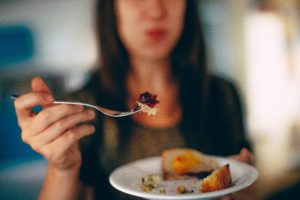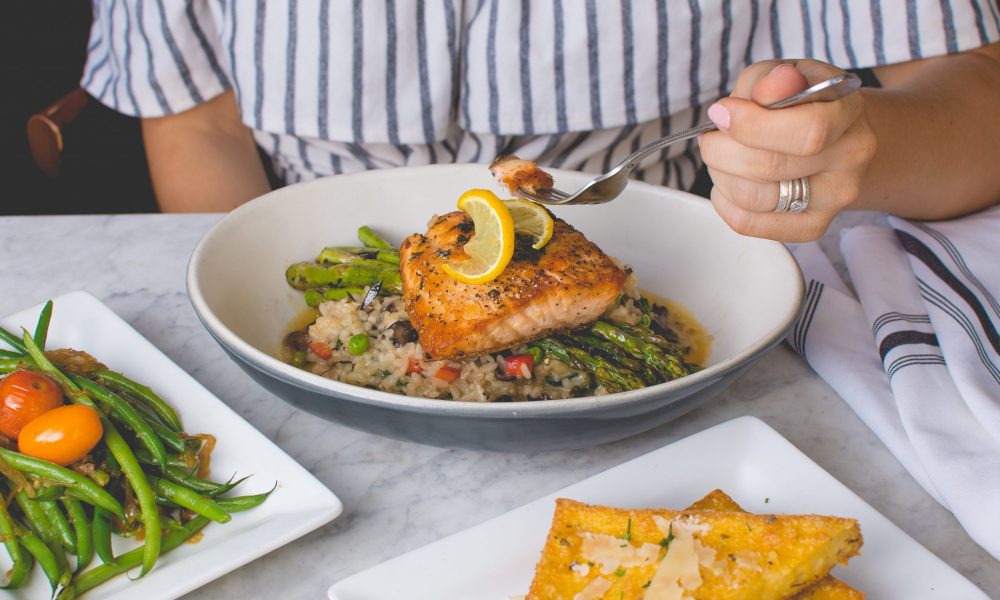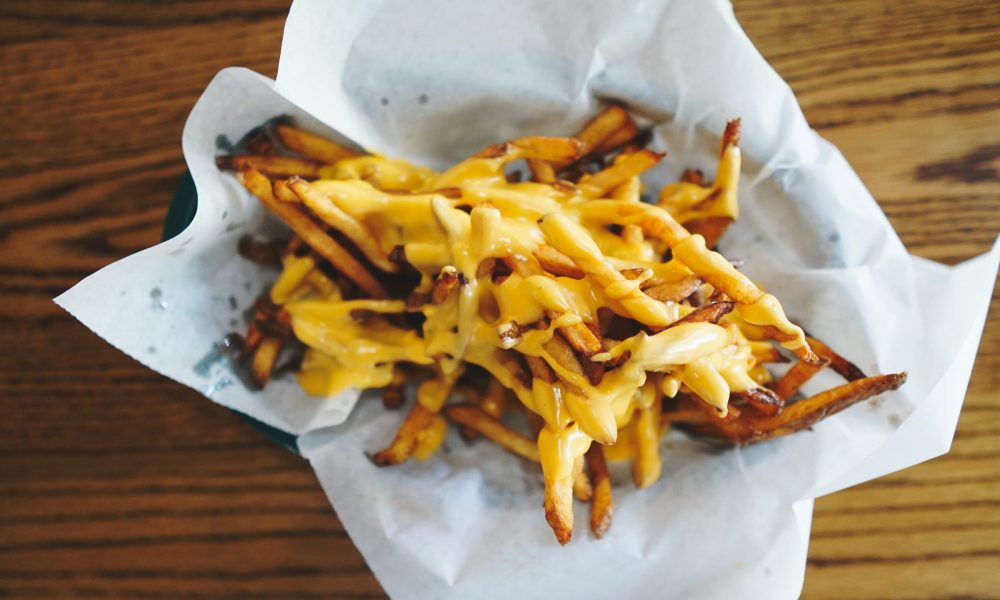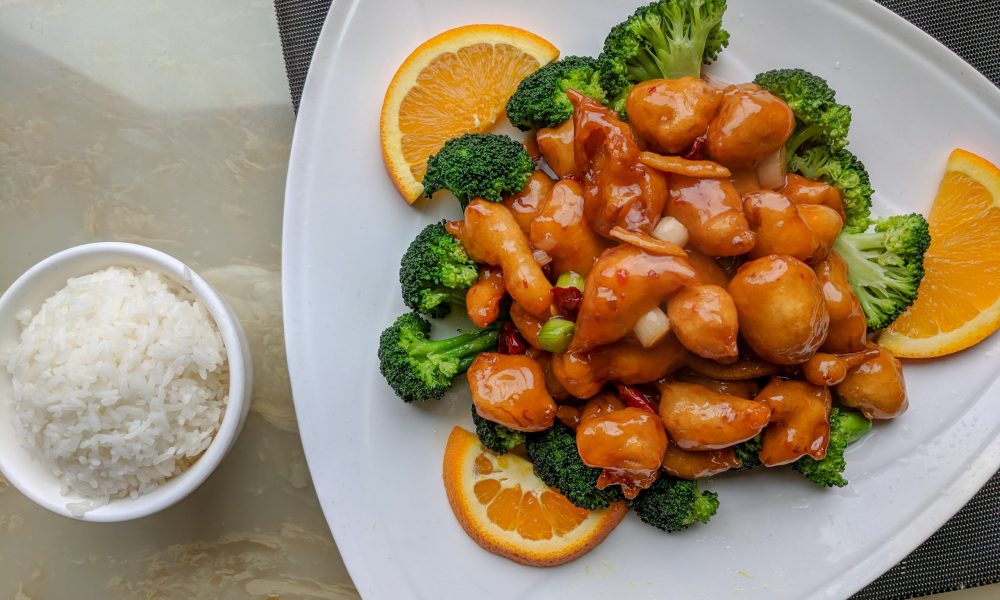
How to Dominate your Hunger like an Almighty Weight Loss Emperor
You ready to go from a mere peasant who can’t stop eating to a satiated almighty weight loss emperor?

Thermic effect of food. That sounds nerdy doesn’t it?
It is totally nerdy and you might not consider yourself a nerd, but trust me, you should be itching to learn about this. Besides making you smarter than outdated nutrition textbooks, this article will help you understand food better and get you a lean sexy body.
Yeah I know you want that, so pay close attention scholar.
Most people know that you burn calories from moving, exercising, or even sitting still, but you can also burn calories from eating. Sounds cool huh?
That’s what the thermic effect of food (TEF) is. It’s basically your body burning calories because it costs energy to digest all the food you eat. Extracting nutrients from food requires work in which your body has to burn calories for. Even when nutrients aren’t fully digested like some types of fiber, just letting nutrients pass through and do it’s thing still burns additional calories (1).
“So in a nutshell, you’re telling me I can burn calories by eating calories?”
Precisely, but before your expectations get carried away, know that there’s no miraculous eating method where TEF alone magically burns everything off. TEF at most will burn off a small fraction of the calories consumed.
Still, TEF can make a pretty hefty difference especially when you consider the long-term accumulation, not to mention optimizing TEF can be done without reducing caloric intake.
I’ll start with age because it’s the only aspect you can’t control. As you may predict, the older you are, the weaker your thermic effect even after correcting for body composition (2).
The good news is that, even with decades of aging, the difference is about 1% (2). Other studies confirm this as well (3,4). I guess the only practical tip for age related TEF is to get as healthy as you can as early as possible. You should be doing this anyways, but this is especially important for my next point.
The more body fat you have, the weaker your thermic effect when consuming fats. In fact, dietary fat seems to have almost no thermic effect for obese individuals (5,6).
Furthermore, the more insulin resistant you are, the worse your thermic effect for carbohydrates because of blood glucose clearing complications (7).

So a lean and healthy individual eating a plate of gooey nachos (carbs/fat) would be able to burn off a small additional percentage of those calories simply from TEF, but obese or metabolically unhealthy individuals don’t get that luxury. If you burn fewer calories through TEF, all those calories are stored and must be burned off through other means.
Moreover, how active you are makes a difference in TEF regardless of age (8). Active people have a much higher thermic effect.
So if you think lean and healthy people have some sort of energy expending advantage, you’re right. Higher TEF is a key advantage, but fortunately, anyone can get lean and healthy to leverage a better TEF. Start dieting, moving, and improving your health. The new you will get an upgraded TEF. The rest of this article will also help you get there.
If you’ve heard of TEF before reading this article, many coaches talk about it in regards to macronutrients. This is the most common talking point of TEF, but still many people get some things wrong.
Many people think carbs have a much higher TEF than fat, but this may not be true. Research shows in isolation, carbs may be a bit higher, but the literature isn’t super clear (9,10,33). Some studies show there is no difference and some even show fat to be superior (5,11).

But the bottom line is that fat and carbs seems to have the same TEF of about 5-15%. So if you ate 100 calories of rice or 100 calories of nut butter, you’d burn off 5-15 calories just from TEF.
The uncertainty of difference between carbs and fat’s TEF is likely due to what type of carb or fat you’re comparing, which is never controlled for in research.
However, within carbs and fat respectively, research clearly shows the same calories of different types have a drastic difference.
Unsaturated fat and medium chain trycligerides (think MCT oil or coconut oil) have a much higher TEF than saturated fat (12-18).
When it comes to carbs, Fiber has a stronger TEF than sugar or starch (19).
So long story short, fat in complete isolation may be slighter less thermogenic than carbs depending on the type and population, but in general they should be referred to as having similar TEF (20).
Many people think protein has a massive thermic effect, but it’s not as high as you’d think. In obese individuals, it’s about 19% and in lean individuals, it’s about 23% (5). As much as you might hear the advice to load your face with protein because the meat sweats will turbocharge calorie burning, this isn’t true.
Protein is rarely researched in isolation and when it does, the thermic effect isn’t as strong as meatheads think (21).

Why people think protein is so thermogenic is because it’s clearly higher than fats and carbs in isolation, but this isn’t how reality works. In real life, most protein is eaten within mixed meals.
And research shows mixed meals have an enhanced TEF of about 25% in lean individuals regardless of it’s macro composition as long as there is some protein in it (5,22,23).
So while protein has a stronger TEF when solely compared to carbs or fat, adding more in a meal doesn’t increase TEF no matter how obsessed the fitness community is with protein (24). For example one study found changing your protein source or tripling the amount in a mixed meal, doesn’t increase TEF (25).
Furthermore, a meta-analysis found protein intake doesn’t correlate with the level of TEF or satiety people experience (32).
So protein does have the highest TEF, but in practical terms, just make sure you eat some at every meal. You don’t need to start mega dosing it. Doing so will just add more calories without any additional TEF.
Macros might not make a huge difference on TEF as commonly believed because most of your calories come from mixed macro meals anyways, but the level of processing may make quite the difference. When foods are heavily processed, harvesting energy from them is easy and thus our bodies don’t have to work as hard to digest them.
For example, imagine the difference in effort it must take your digestive system to break down loose watery applesauce compared to hard fibrous apple slices with the skin. One is easy for your body and the other requires more hustle which inevitably cost more energy expended.
That being said, we only have one study on food processing and TEF, but it’s quite insightful.
Barr et al 2010 took 2 groups of average weight people and fed them calorie matched meals (26).

One group called the whole food group got fed sandwiches made of whole multigrain bread and cheddar cheese. The other group known as the processed group got fed sandwiches made of white bread and American cheese.
By the way, if you don’t know the difference between cheddar and American cheese, you should slap yourself. While similar in color any reasonably self-respecting human being knows the difference. Cheddar is the perfect blend between yellow and orange that any credible restaurant or deli would serve. On the other hand, American cheese is a faded processed yellow, individually packaged in cheap plastic and often served to children who don’t know any better.
One taste like pure heaven and the other taste like moldy rubber. Such a big pet peeve of mine.
While quite off topic, I hope my cheese rant reinforces critical cheese awareness to the world.
Back to the study. The 2 groups got their TEF measured. The whole foods group eating less processed sandwiches had almost double the thermic effect (19.9% vs 10.7%).
The whole food group also had slightly higher protein and unsaturated fat consumption along with much higher fiber intake.
The question becomes is the difference due to the favorable nutriants or the lack of food processing? I’m willing to bet it has to do with both because the effect was so high, but nonetheless, they’re inseparable in practice.
Minimally processed foods will generally have more favorable nutrient profiles than heavily processed foods of the same calories.
Not to mention, this study essentially compared cheese sandwiches. Although the whole food group ate minimally processed forms, imagine how much more TEF could be possible with even less processed foods like chicken and broccoli?
This puts the overzealous IIFYM fanboys in question. Playing with your macros too much by frequently eating pop tarts and protein bars can undoubtedly work, but you can easily double your TEF by switching to more minimally processed foods.
Our bodies have a rhythm to it. We have internal clocks that expect and prepare for various cycles, so in almost every area of research, doing things with a regular pattern is better than otherwise.
TEF is no different. TEF is enhanced with a regular eating pattern compared to an irregular one even when weekly meals are matched (27).
So if you want another edge in energy expenditure, eat your meals at similar times each day. It doesn’t have to be perfect to the millisecond, but I recommend eating within 30 minutes of the same time each day if possible.
Stress is one of those aspects that makes everything worse. Indeed, one study found acute stress or a history of depression can lower the thermic effect of food by about 104 calories from one 930 calorie meal (31).
That’s over 10%, so imagine burning over 10% less calories each day that you’re chronically stress. Easier said then done, which is why I have a free guide below.
Grab my Lifter’s Guide to Managing Stress
I just went over everything that boosts TEF, but there’s one factor that people think enhances TEF that doesn’t. Time for some good old myth busting.
Research shows meal frequency is irrelevant to TEF.
No matter the type of subjects or the number of meals compared, research just doesn’t find a difference in TEF (28,29,30). What and how much total food you eat matters far more than how often you eat.
TEF is influenced by many factors. An overweight inactive stressful individual eating minimal protein and lots of processed foods will have a deeply compromised TEF compared to a lean active individual eating whole food meals rich in protein, fiber, and unsaturated fat.
While TEF is technically the weakest way our body burns calories, the contrast between lifestyles can make a big difference, roughly between 10-25% of caloric intake.
Don’t underestimate the thermic effect of food my friends.
Kiecolt-Glaser, Janice K, et al. “Daily Stressors, Past Depression, and Metabolic Responses to High-Fat Meals: a Novel Path to Obesity.” Biological Psychiatry, U.S. National Library of Medicine, 1 Apr. 2015, www.ncbi.nlm.nih.gov/pmc/articles/PMC4289126/.
Ravn, Anne-Marie, et al. “Thermic Effect of a Meal and Appetite in Adults: an Individual Participant Data Meta-Analysis of Meal-Test Trials.” Food & Nutrition Research, Co-Action Publishing, 23 Dec. 2013, www.ncbi.nlm.nih.gov/pmc/articles/PMC3873760/.
Grab my free checklist on how to defeat your worst food cravings

You ready to go from a mere peasant who can’t stop eating to a satiated almighty weight loss emperor?

Stretching is an interesting topic in this ever so controversial world of fitness. On one hand, you have hippie yoga girls who build their entire training programs around stretching. On the other extreme,

We all want to burn a ton of calories cause the more we burn, the more we can eat at a given energy balance. For example, it’s far better to diet on 1800 calories instead of 1200 calories.